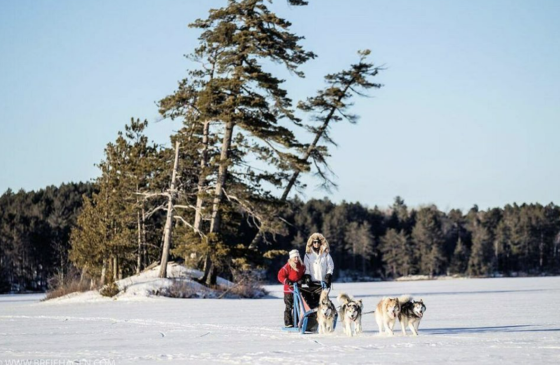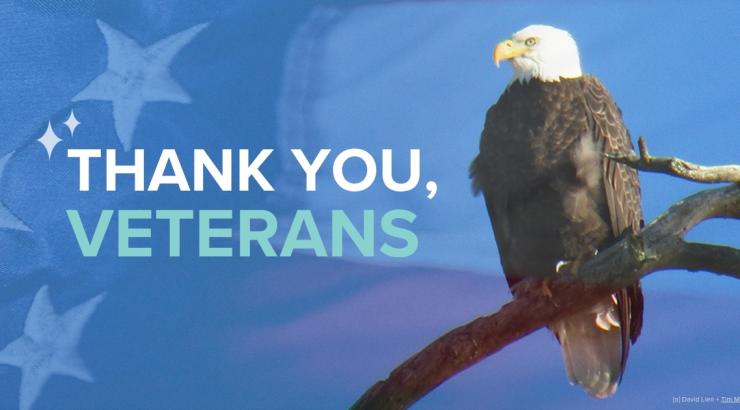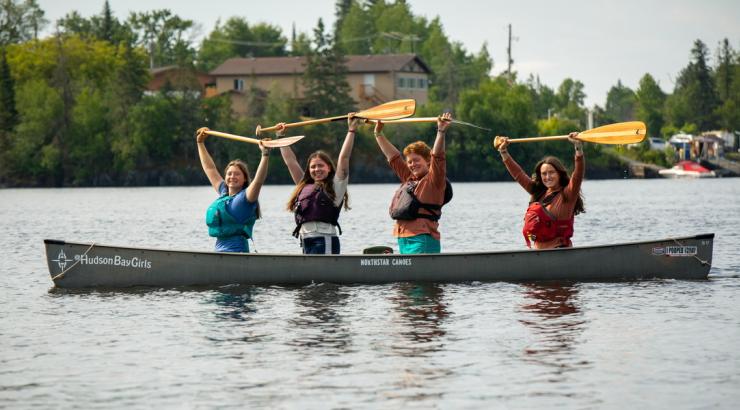Nestled in the pristine Wilderness of Northeastern Minnesota, the Boundary Waters Canoe Area Wilderness, or BWCA, has long been revered for its awe-inspiring beauty, abundant wildlife, and vibrant outdoor recreation. However, this winter has unfolded as a chapter unlike any other in the region's history. Unseasonably warm temperatures have disrupted the traditional rhythms of life, challenging businesses and ecosystems, altering recreational pursuits, and prompting a collective response from the resilient local communities bordering the BWCA, often referred to as the “Wilderness Edge.”
I’m Heather, a Climate Impact Corps(CIC) member recently placed with Save the Boundary Waters. What is CIC? CIC’s mission is to assist organizations in the preservation and protection of our environment. Members like me are trained to help foster a sense of community and a sense of place as a way to bring people together for the better of us and the planet. So, luckily, my first assignment was investigating what is happening in the BWCA Wilderness Edge communities this winter and how we can all help to preserve the businesses and organizations that keep this region the most visited Wilderness Area in the US!
As a regular visitor and lover of the area, I thought I had a pretty good understanding of how warmer temperatures and low snow totals would affect this region. I was wrong. The varying types of recreation, the nuances of the economy, and the resilience of these communities were revelatory discoveries that I’m excited to share with all of you. Through a series of interviews with local business owners, we embark on a journey to explore the multifaceted impacts of this unprecedented weather phenomenon and the innovative strategies employed to adapt and thrive amidst ecological uncertainty.
What is happening with the climate this year?
The first thing I realized I was wrong about is what is factually happening with the climate right now. I thought it was a typical El Nino phenomenon compounded by advanced global warming. What I discovered is that it’s much more nuanced than that. Kenny Blumenfeld, a Senior Climatologist for the MN Department of Natural Resources explained on *TPT Almanac, “It is a 1, 2 punch. So we have been warming because the globe has been getting warmer. And so our winters in particular have warmed 5,6, even 7 degrees just since 1970. So that you can think about as the base. And that base has been getting higher. And then an El Nino comes by and it produces this big temperature spike. So that temperature spike is on top of this increasing base so you get much warmer than you would.”
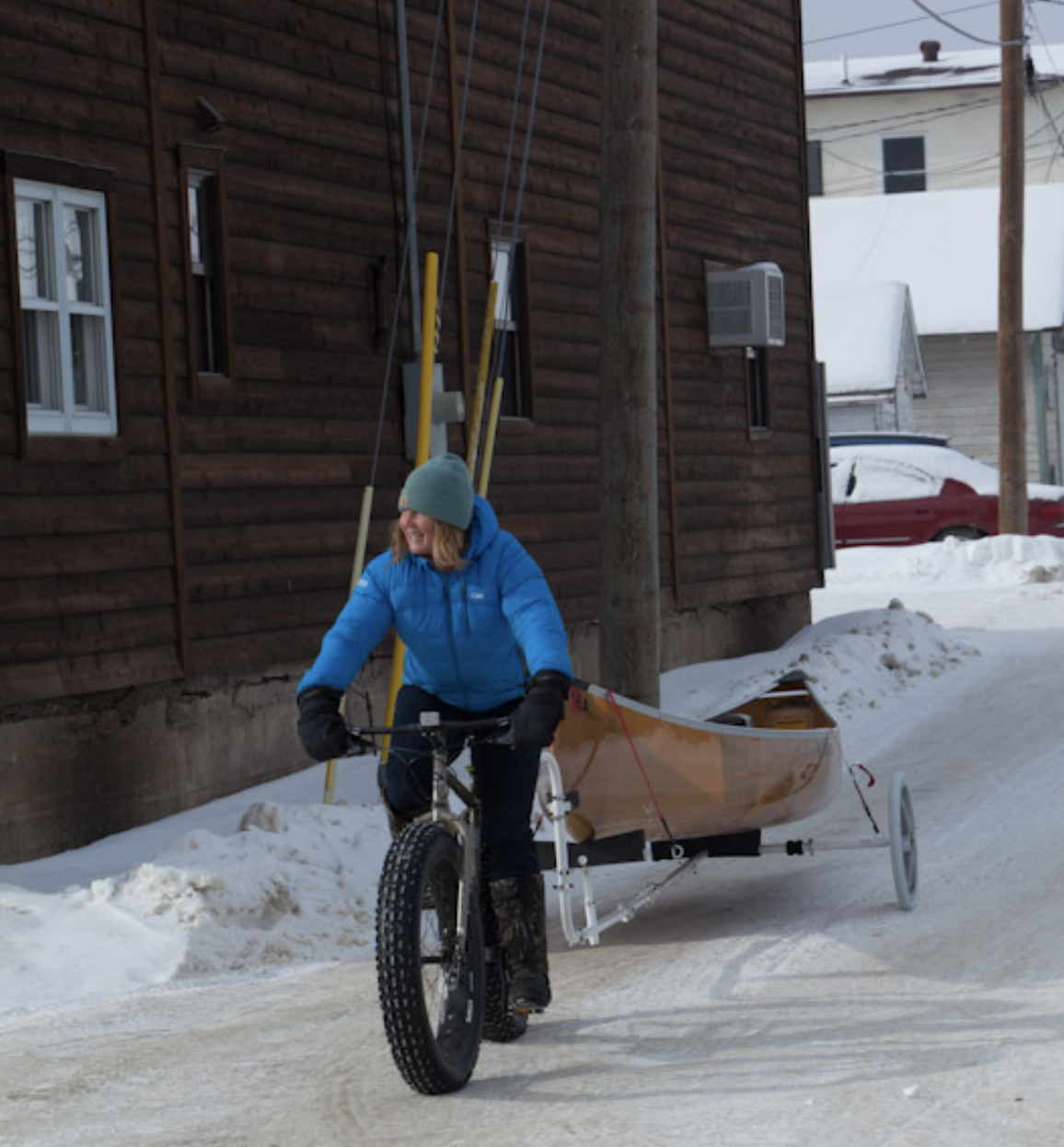 He went on to say, “But there’s other things going on too. Some recent research shows that the Hunga Tonga Volcano from about 2 years ago actually put a lot of water vapor in the stratosphere and that’s adding a little bit of extra heat to what we’re experiencing. Also, all the ships going across the ocean, they pollute a bit less now so more sunlight gets through.”
He went on to say, “But there’s other things going on too. Some recent research shows that the Hunga Tonga Volcano from about 2 years ago actually put a lot of water vapor in the stratosphere and that’s adding a little bit of extra heat to what we’re experiencing. Also, all the ships going across the ocean, they pollute a bit less now so more sunlight gets through.”
According to Paul Schurke of Wintergreen Dogsledding Lodge, “We take some solace in that we’re told this is a very rare, super El Nino event. The last time this happened was in 1887. They know from weather data there was no snow in Duluth that year. With any luck, we’re hoping that we don’t have another super El Nino for another 150 years. We accept the fact that this may be the new normal, climatologists acknowledge that this is worse than the last super El Nino. So, it’s believed that climate change is exacerbating the effect.”
Learning the above, I realized that this winter’s weather may not have been as catastrophic as I, and many others, had feared. Subsequently, I was able to envision how we can adapt to the real instability we face together.
How Wilderness-edge businesses are faring
Most outfitters that cater to winter experiences are reporting significant decreases in visitors. Wintergreen, Cast Outdoors, Piragis, and Sawtooth Outfitters all report running at about 50% or less of the average winter. While the small lodges and taverns that cater to snowmobilers have had to reduce hours and services due to record low business. Tourism and business in the towns are also down significantly overall.
Tim Barton, the Winter Outfitting Manager at Piragis Northwoods Company in Ely shared, “Lack of people visiting has been a big part of it. Cross-country skiing, Hok Skis, and snowshoes have gotten very little use. I won’t be buying new gear this year. I’ll carry it over to next year.”
Addie Wales of the Ely Cabin Collective, said, “This winter is worse. Not sure if it’s from lack of snow or a result of a changing trend post-COVID where people are doing more airplane travel than in-state travel now that the threat of COVID seems milder. One cabin was still booked regularly, but the other cabin is booking less than in previous years.”
Jeff Lynch, owner of Sawtooth Outfitters in Tofte, MN told me, “Every business up here is down substantially. The only thing that’s keeping people coming up to Lutsen is Lutsen Mountain because they make snow. Ice conditions are challenging. It’s mostly glare ice.”
He went on to say, “Every business up here has been hit hard. We’re probably 50% down in revenue. This could carry into the summer season too if we don’t get a decent snowpack or if spring rains are low once the ground thaws.” “We’re still renting winter camping equipment. You have to walk with traction control unless you’re skiing along the edge of the lake with backcountry skis or what we call Hok Skis. But we’re just limited to what you can do. There are no snowmobilers to support the restaurants that are out in the middle of the woods. Without snowmobilers, they get zero businesses,” Jeff said. Jeff also volunteers with the Sugarbush Trail System which offers 65 kilometers of groomed cross-country ski trails through beautiful and remote Forest Service land in the Lutsen-Tofte area. “We employ a full-time groomer and that’s his main source of income in the winter. He’s getting a fraction of what he would in previous years. There’s a chance he’ll have to get a different job in the winter.”
.jpg)
“Next season, we may not have him as a full-time groomer. That’s a specialized position that not many people can do unless they know what they’re doing. It will be a big loss to us if we don’t have him next season. We can’t afford to pay people to not work. It’s hard. The big resorts and hotels, ma and pops, everyone is struggling,” Jeff went on to say, “A lot of the big resorts bring in seasonal workers on a visa, they have to guarantee a certain number of hours. It’s tough to keep them on the payroll for the minimum amount of hours required. We’ve had kids come in here saying they’re on the minimum and asking if we have extra work. Unfortunately, we don’t.”
How these communities are adapting Another concept I was dispossessed of in these conversations is that there’s little you can do on the Wilderness edge in a light winter like this. While snowmobiling was all but nonexistent and Nordic skiing was limited, other activities like dogsledding remained viable. Activities like ice fishing, camping, hiking, and skate skiing were actually better this season. With some adaptability and ingenuity on the part of local businesses and visitors, this winter has still provided the magical experience of nature this region is known for.
Regarding dogsledding this winter, according to Paul Schurke, they haven’t had to cancel even one trip due to their doggedness, no pun intended. “It has put our trail-finding skills into hyperdrive. I’ve been feeling pretty good about the fact that we’ve been able to make it happen when the situation looked remarkably bleak. While some other outfitters have shut down for the season, we were able to piece experiences together. So far so good. People are having a great time. “We’re encouraging people to contact us now to get added to our Sneak Preview List. When you’re on that list, you get advanced notice of next season’s schedule before it’s posted on the website. A lot of our schedule gets booked up right away. Our Sneak Preview List guests get first dibs on their preferred dates.”
While Dave Hicks, Owner of Cast Outdoors has a business model made for a season like this already in place. “For us, the main thing that stood out for us, our strong point, is our adaptability. The ability to chase snow, per se. As a company, we always transport to different locations based on the needs of the group. So this winter played into our strong suit that since we are always going to different locations, we could chase the snow. We were much more able to do things that other companies didn’t have the capacity to do since they run from their location. They had to change up their program this year. We’ve been doing this for 4 years so it didn’t really change anything for us.”
Even when conditions aren’t conducive to sledding, he says, “Our kennel offers meet and greet packages spring through fall, where people can come and meet the dogs and get the hands-on presentation piece, minus the dogsled trip. So that’s something we offer year-round. If someone comes up in the summertime, they can meet the dogs and see if a dogsled trip is something they want to do in the wintertime.”
According to Peta Barrett of Women’s Wilderness Discovery, visitors and locals who have braved the sometimes windy conditions are gifted with rare sights and experiences. “One of my guides did a fast-moving, cold-camping, nordic ski winter trip. They had 10-12 people on a 4-day trip into Quetico. They skied, moved fast, and cold camped. They didn’t see another group the entire time. It’s actually lovely If you plan ahead and bring the right gear.
“Skate skiing is extraordinary right now. My dear friend, who is 74 years old, is skating over 20 miles a day. Anyone who’s mushing is doing well. There’s been very little slush. Yesterday, there were a dozen trumpeter swans on Shagwa river. There are a lot of benefits to coming up right now. The animals don’t have to hunker down because the snow isn’t dense and food is plentiful. We’re also getting ready for what’s shaping up to be great trout fishing in March.”
It’s always important to check the weather conditions before you visit. The National Oceanic Atmospheric Administration, or NOAA, is regarded as the go-to in the region for preparation. If you’re going into the National Forest or the BWCA, be sure to call ahead to the nearest ranger station. They can let you know about the amount of traffic they’re seeing during pre-permit season and prepare you for the gear you’re likely to need.

How we can support the Wilderness edge in any type of winter weather
My winter activities up north have consisted of exclusively snowmobiling and cross country skiing. These habits paired with how warm and snowless this winter appeared from the Twin Cities definitely impacted how I patronized this region, and I wasn’t alone. These interviews helped me see that, if we open our minds even a little bit to new types of adventure, there’s so much we can do to keep these businesses and communities healthy by adapting our perceptions.
Dave Hicks helped me see how we universalize conditions based on what we’re observing in our home climate. “Visitors can call ahead and check conditions, understanding it may be very different up north compared to where they are. They plan vacations based around the conditions where they’re at. People in the Twin Cities, Chicago, and Milwaukee don’t think about coming up a few hours north when they don’t even have ice on the lakes.”
Addie Wales confirmed, “Compared to the cities, it’s still 10-20 degrees colder and there’s a lot to do regardless of snow. Ely offers such a variety in all different seasons. If they haven’t visited in the spring, they should book a trip and check out the waterfalls. Spring is generally a quieter time of year so you’re likely to get your first choice of bookings. The best part about a spring visit is that you get all of the amazing nature but no bugs. Also, the northern lights are expected to be great this year.” Jeff Lynch echoed these sentiments, “The problem is convincing people that there are half way decent conditions up here. When people, in the southern regions, are seeing spring-like conditions, 60s and sunny, they don’t think we have any winter sport activity up here. But people can come up and still recreate. If you’re an alpine skier or cross country skier, you can still come up to Lutsen. You can go hiking, the lakes still have plenty of ice. We have 2’ of ice in some places as of early March. “On the bright side, this winter has been mostly double digit temps. Skiing has been like spring conditionings all winter. People are going hiking. Even if it’s windy, it’s not freezing cold. It has been easier on people who aren’t used to freezing cold temperatures. “We just came out of the Sawbill Lake on the BWCA. We had beautiful weather and there’s still 2’ of solid ice. Ice’s still being made because there isn’t snow to insulate it. We’re seeing solid ice. No rotten ice. This time of year you often start seeing rotten ice as the snow on top of the ice starts to melt. This year that’s not happening.”
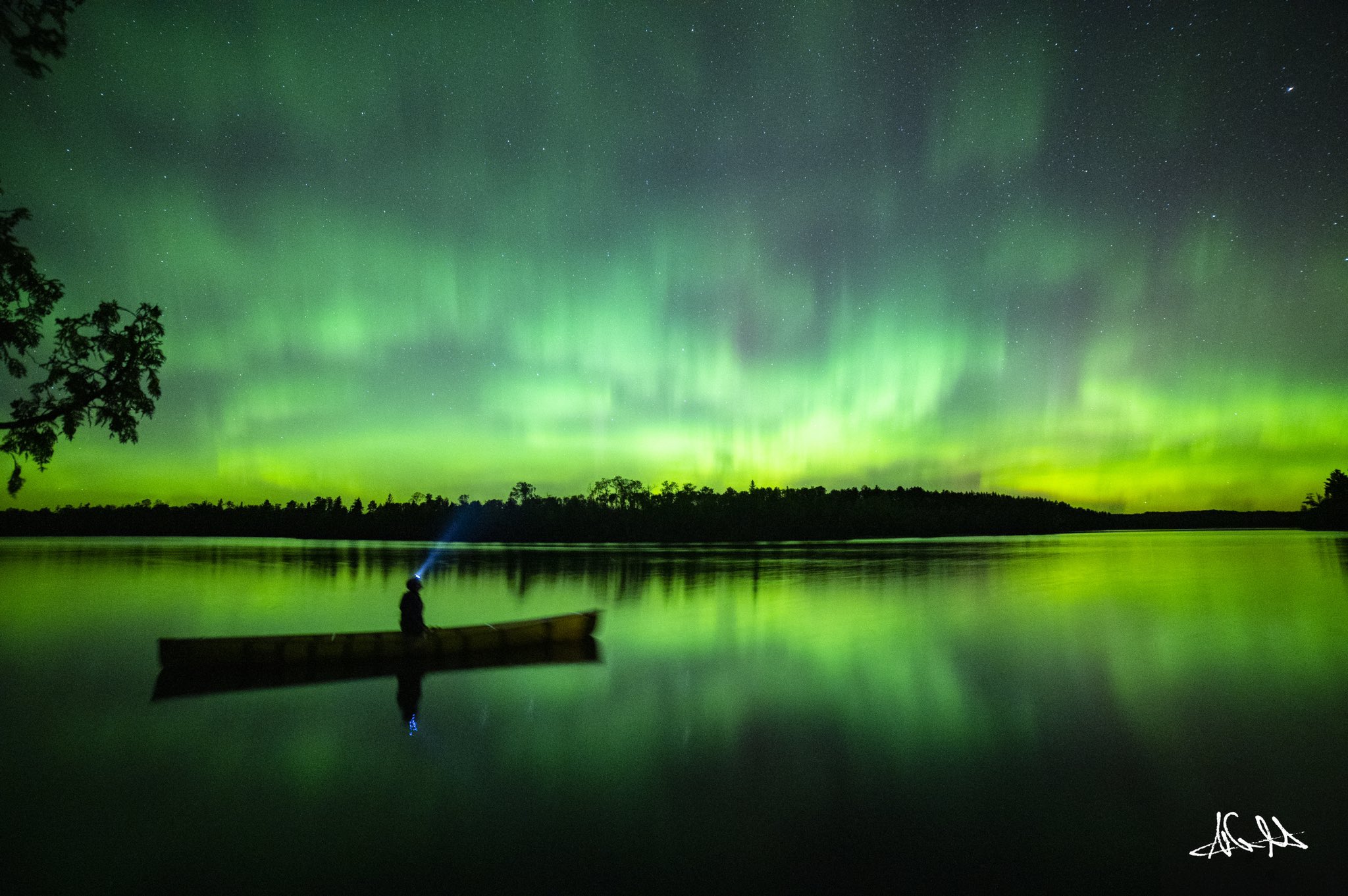 My biggest takeaway from these heartwarming conversations is that adapting to climate change is as much on us as guests of this region as it is on these communities. If we adapt our way of thinking about what recreation we associate with this area, we can guarantee that the businesses we rely on will be around when conditions are more ideal.
My biggest takeaway from these heartwarming conversations is that adapting to climate change is as much on us as guests of this region as it is on these communities. If we adapt our way of thinking about what recreation we associate with this area, we can guarantee that the businesses we rely on will be around when conditions are more ideal.
We also get the benefit of discovering things that we would never experience in a normal year. As Peta Barrett shared, “This winter the lake is just singing. That’s a beautiful part that a lot of people don't get to experience. The sun is getting very intense but we still have cold days and cold nights so the ice is safe. You might see northern lights. On a clear cold night, you can see the stars, aurora borealis, and you can hear the lake sing.”
Consider keeping your Northwoods plans intact no matter what the conditions are and be a part of preserving these communities and these voices that speak loudly for this quiet place.
Also, Governor Tim Walz recently announced that federal funding is now available for small businesses affected by the historic drought conditions that occurred this winter in Minnesota. “Amid the warmest winter on record, federal Economic Injury Disaster Loans are available because of ongoing federal drought declarations affecting 81 Minnesota counties. Governor Walz urges small business owners to apply for assistance as soon as possible.”
*”Wimpy Winter Weather,” on TPT Almanac, season 2024, episode 23, aired on 2/16/2024.
